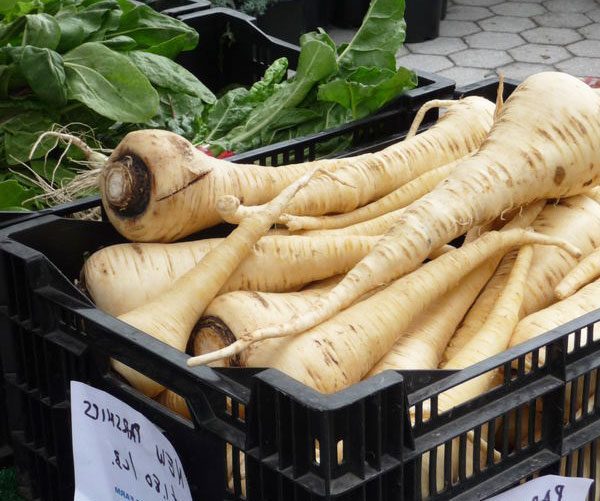Why do we love parsnip? A longtime favorite in Europe (it was once as ubiquitous as the potato is nowadays), this root vegetable looks just like a carrot in all ways but its off-white color. Parsnips add a “sweet and nutty flavor” to your winter soups and stews. They are rich in fiber, vitamin C and potassium. It’s a shame that parsnip aren’t more popular, because their great and full earthy flavor make them even sweeter than carrots.
Buying and storing
Parsnips are easily available all year-round and you can cook it in any way you can imagine. Moreover, you can keep it for weeks. Smaller parsnip specimens are better for cooking because larger ones can have a woody texture. Just like carrots, they should be firm and crisp when you buy them. You will keep them for a long time if you wrap them in plastic or paper in the refrigerator.
How to enjoy parsnip
As said above, prepare and cook parsnips as you would do for carrots. If you get some large specimens, it’s best to remove the woody core: cut the thin portion and keep it aside. Cut the thicker portion in half and dig out the core with the tip of a vegetable peeler or a paring knife. )
Best cooking methods
Steaming, braising, glazing, and roasting. Cooked parsnips make an incredible purée.
When is it done? When tender enough to pierce easily with a thin-bladed knife or skewer. But cooked parsnip shouldn’t be mushy, even for pureeing. It’s delicious when you roast parsnips, just like other root veggies. You can also have them mashed for a puree that’s lighter that potato or other starches.
Parsnips are a good substitute for carrots and vice versa.
Recipes using parsnips
Try these 2 recipes from our index!


